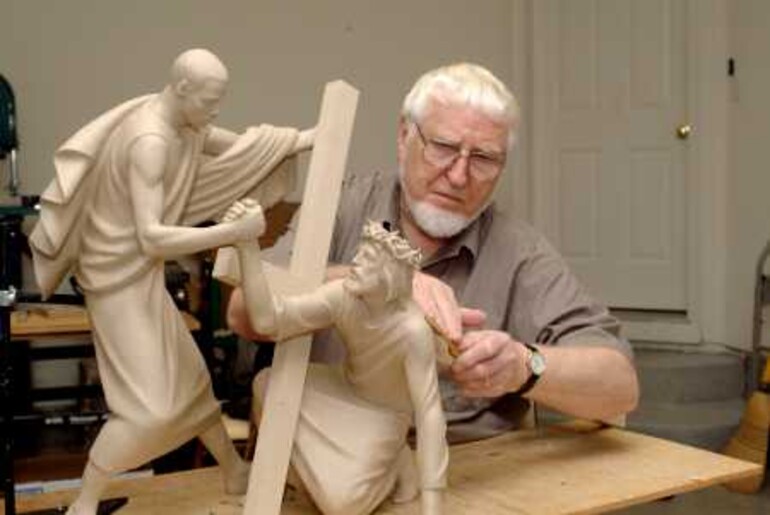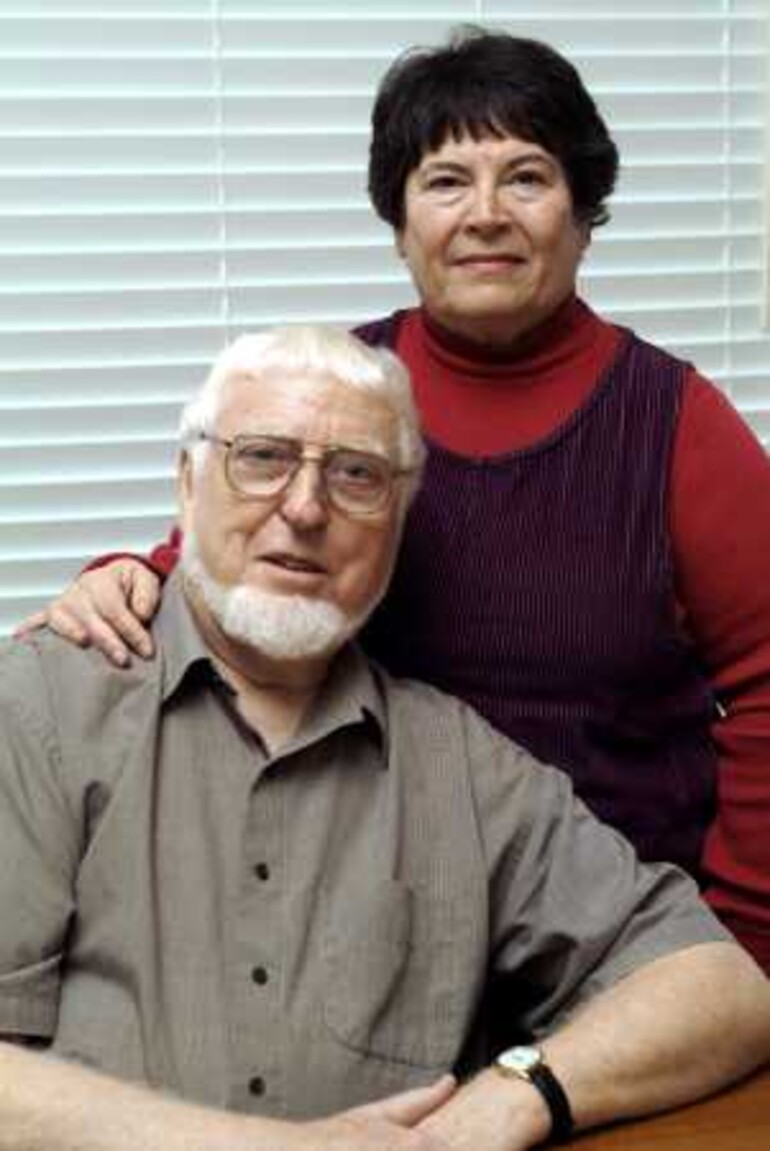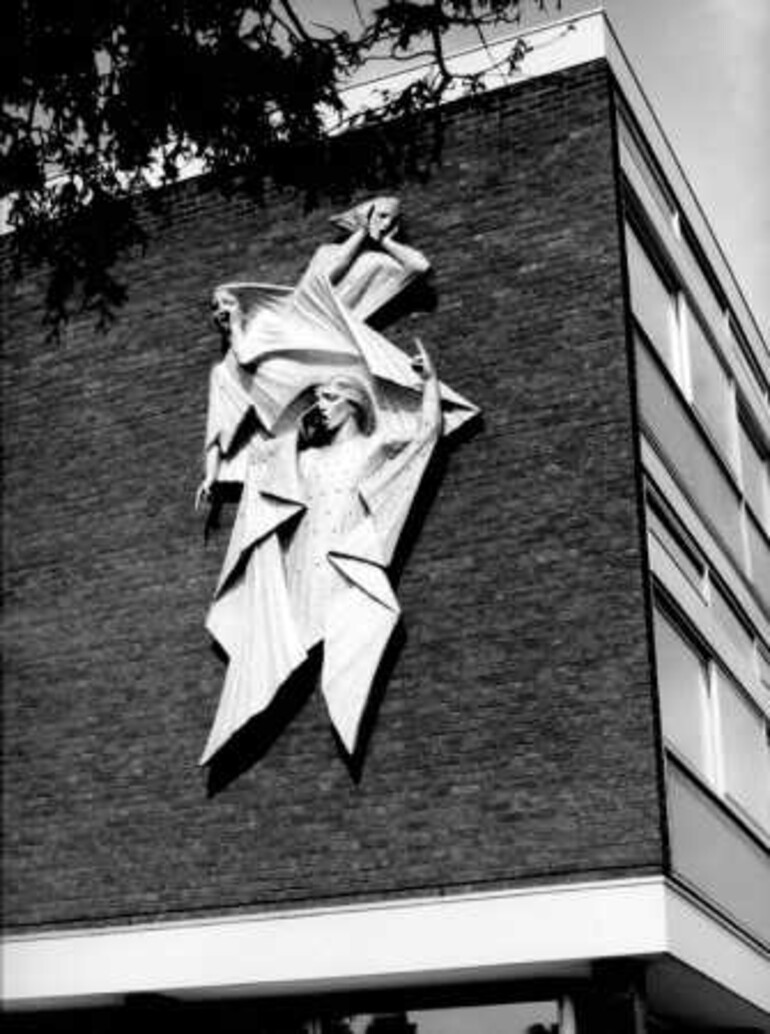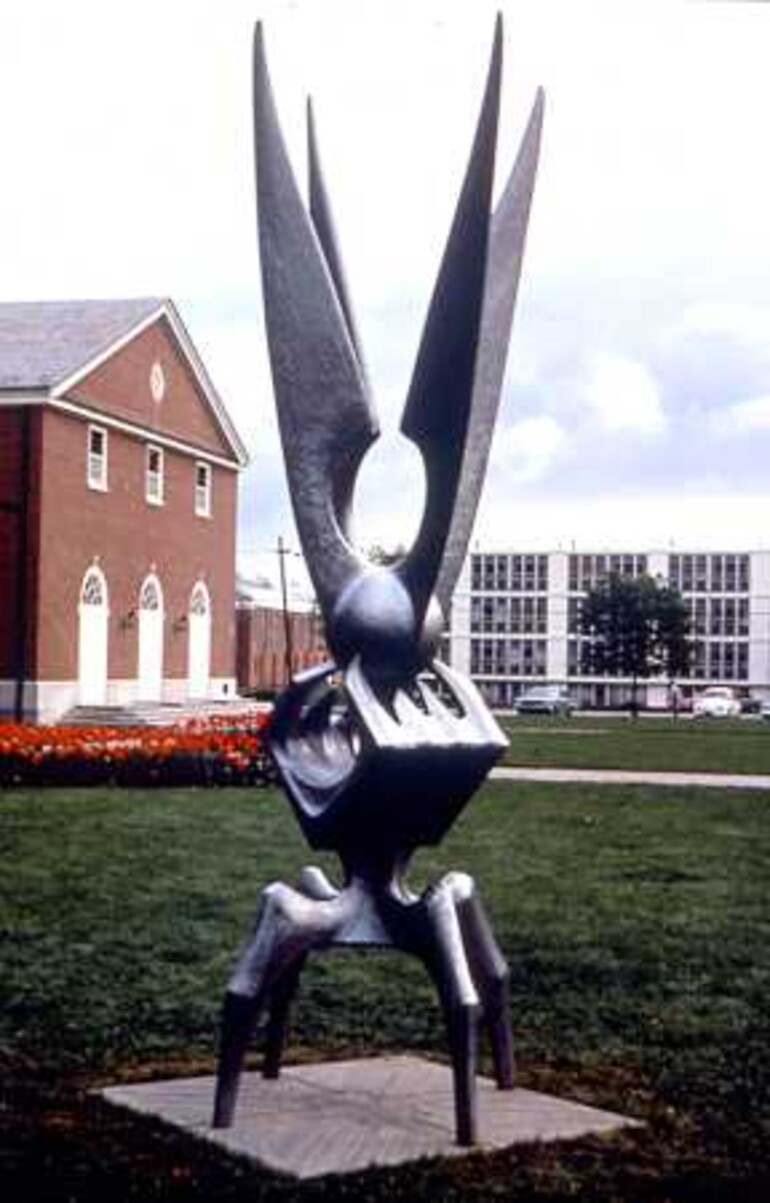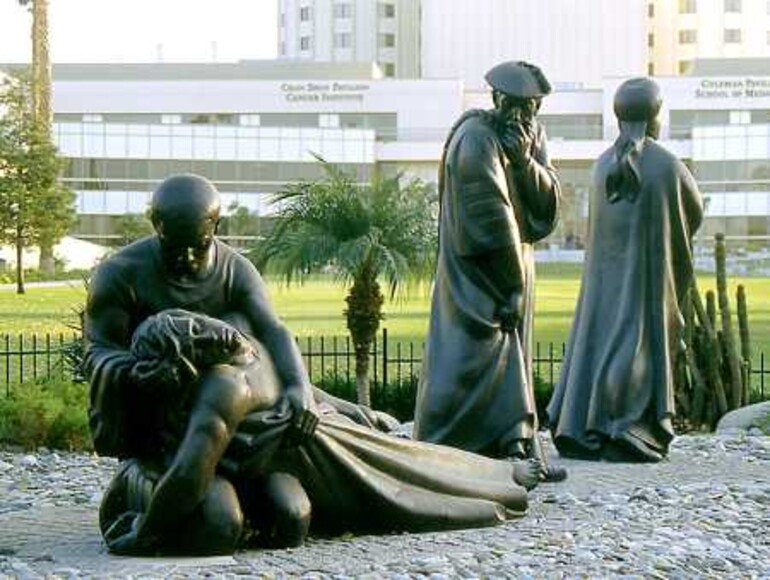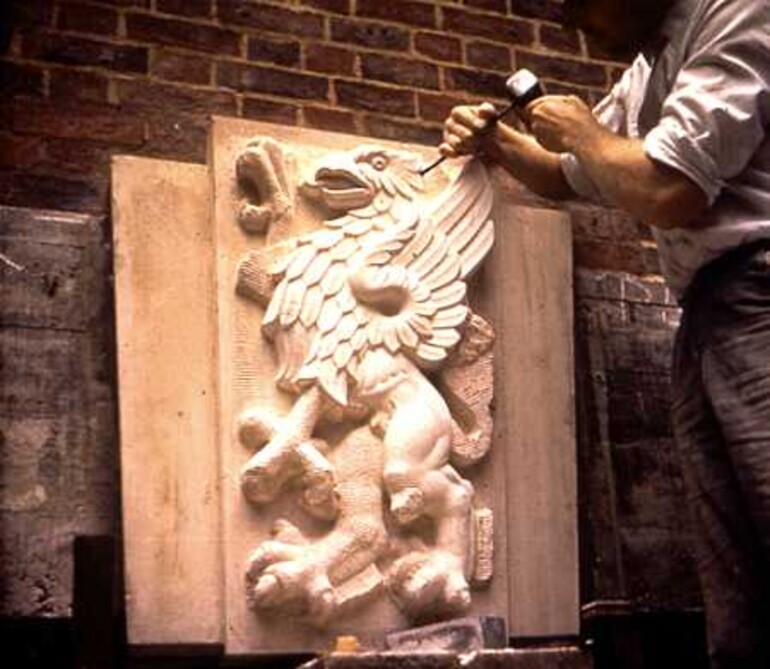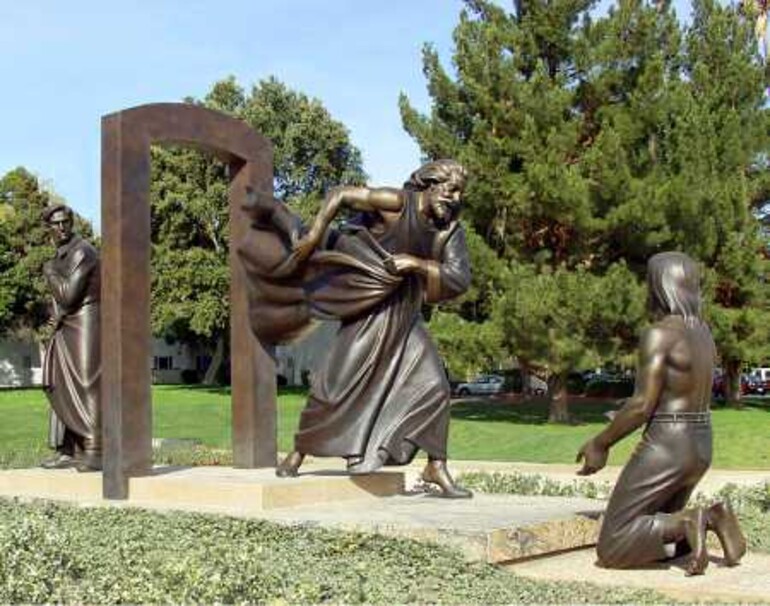Some of the Northwest's smallest towns harbor world-class talent being used to share God's love. Phoenix, Oregon, is just such a town—a Medford suburb that is home to sculptor Alan Collins, whose lectures and art have graced the campuses of several Adventist colleges.
Though now at home in small-town America, Alan's journey began thousands of miles away. Born in Beddington, a village in Surrey County, England, Alan excelled in his art classes. At 16 he persuaded his parents to let him attend Wimbledon Art School in southwest London, where he made significant progress and after two years of study won first place in a country-wide examination.
Though his father hoped Alan would follow him into banking, it became all too clear that Alan's future lay along a different path, dedicated to a study of sculpture and especially the craft of stone carving. His earliest compositions were carved in the fine-grained Malta stone that had served as ballast for World War II supply ships returning from the island garrison.
After graduating from the Sculpture School of the Royal College of Art, Alan was elected a Fellow of the Royal Society of British Sculptors and was awarded the Sir Otto Beit Medal for stone sculpture at Guildford Cathedral, a medal given as first prize for sculpture submitted from the whole United Kingdom and the British Commonwealth.
Alan and his family attended weekly meetings by Tom Bradley, an Australian preacher, and became convinced of the biblical truth he presented. Though the Sabbath-keeping issue “stuck in their throats," they eventually were baptized.
Alan taught art while carving commissions for new buildings as well as repairing and restoring carvings on churches and other structures damaged by age and war. Then in 1968, he moved with his wife, daughter, and young son to teach at Atlantic Union College in South Lancaster, Massachusetts. Three years later, they headed to Andrews University in Michigan.
After enduring seven of Michigan’s winters, Alan and his family moved to La Sierra University and California's warmer, drier climate. Alan taught at La Sierra for more than 11 years before he retired. Sadly, his wife, Jan, died there after a long struggle with cancer.
At each of these three Adventist colleges, Alan created the signature sculpture by which the school is now identified.
Now in Phoenix, Alan works in clay, wood, bronze, large stones and concrete. He and his second wife, Aliki, were married in 1993 and are active members of the Medford Church. Alan is still accepting commissions. He is completing a piece for the campus of Oakwood College in Huntsville, Alabama, named Sacrificial Service, which portrays the story of Simon of Cyrene lifting Jesus’ cross from Him.
The International Biennale of Contemporary Art in Florence, Italy, an exhibition that normally showcases art in a wide range of styles, accepted Alan’s works last year. The invitation to exhibit at the Biennale is an endorsement of Alan's ability and solidifies his worldwide reputation.
Although Alan’s work is widely recognized, he does not want to do sculpture that remains in a gallery, but prefers his artwork to tell a story in public places.
“While we were installing the prodigal son figures on the campus of La Sierra University, I was preoccupied with making sure everything was placed in exactly the right position, and Aliki was standing to one side watching the process," Alan explains. "She fell into conversation with another observer who expressed deep interest in the work. She discovered he was the son of the donor of the sculpture, and she noticed that his eyes were moist. He explained that he was interested in coming back to church. The sculpture made him think and encouraged him to do it.”
A few weeks later, a craftsman came to adjust the base of the Glory of God's Grace sculpture and was discussing the work with David Geriguis, La Sierra’s financial vice president. The man said he didn’t really understand its significance. As Dave finished explaining it, he noticed tears streaming down the man’s face and asked why. The man explained that he’d thrown his "no-good, trouble-making son" out of the house that very morning. Now he knew he should find his son and bring him home. A southern California church official remarked that Alan’s sculptures are “24-hour, 365-days-a-year silent sermons.”
It's been a long journey from a small English village to international recognition, but along the way Alan has left a legacy in students' lives and in his sculptures which illustrate God's redeeming love.





